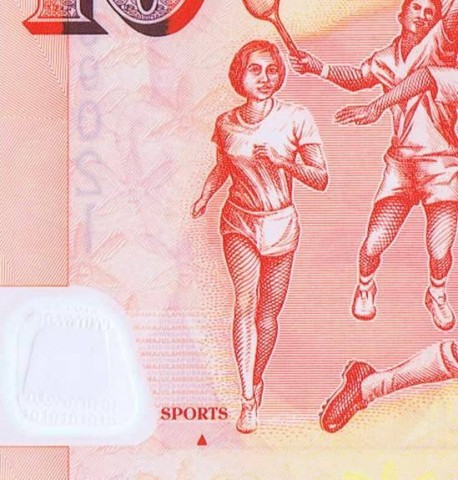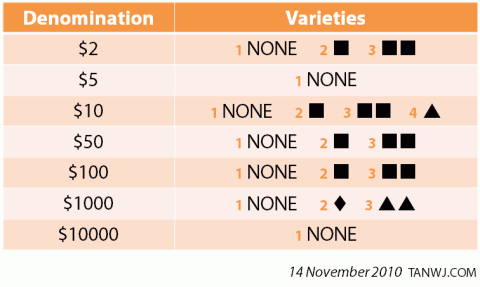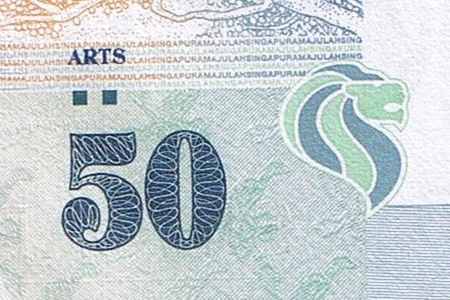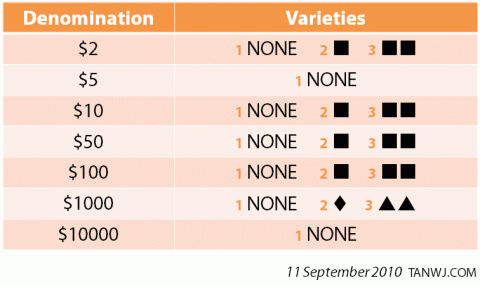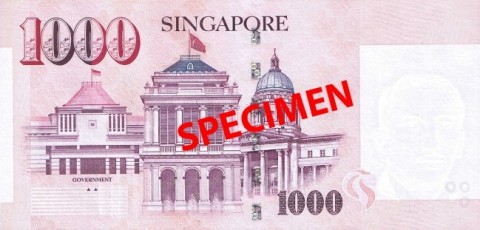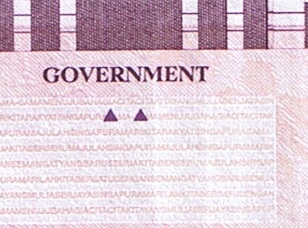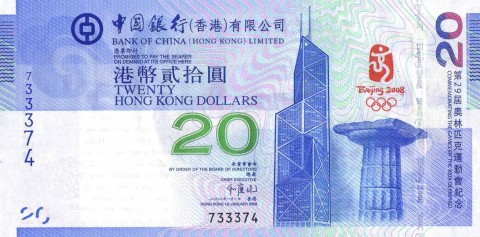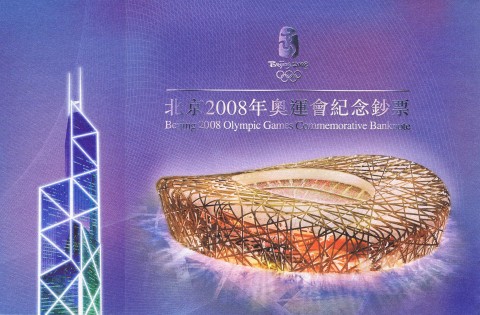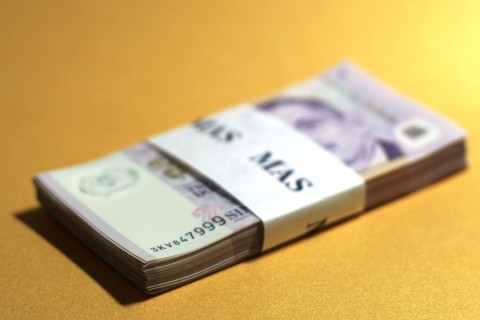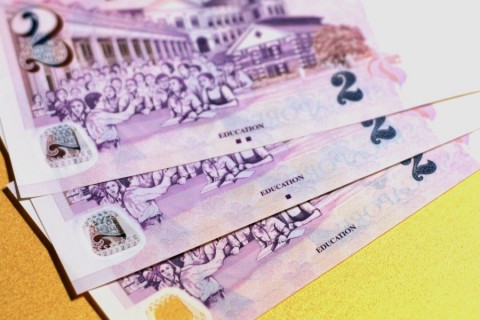New $100 paper banknotes have been spotted in Singapore a few days ago, carrying the signature of Senior Minister Goh Chok Tong, Chairman of the Monetary Authority of Singapore. Upon obtaining the note, the first thing which I noticed was the difference in intensity of colour on the new $100 note, in particular the dark brown colour.

On the reverse of the notes, there are two square dots printed below the word ‘Youth’. Check it out for yourself. The next time you reach for a bill, whether in one of your favourite restaurants, at the bank, at a café or florist – take a closer look! There you will notice the tiny details, like the dots. You might even find other symbols. According to the MAS, there may be other symbols found on the note. My current hypothesis is that these dots represent the year of printing. Since January 2008, $10 notes with one square dot were found in circulation. From October 2009, $10 notes contained two square dots. The former is believed to be printed in 2007, while the latter is believed to be printed in 2008 or 2009.
Alternatively, these dots may represent the year in which the notes were introduced into circulation. However, the size of the square dots on the $10 polymer notes is slightly larger than that on the $100 paper notes. Additionally, the distance between the square dots on the $10 polymer notes is less than that on the $100 paper notes. Depending on your interpretation, these two symbols may be considered as different.
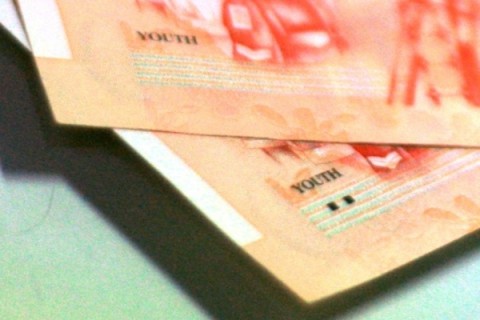
For note collectors, the first prefix for the new $100 notes is believed to be 1AA. In order to learn more about the new $100 notes, we really need your help.
When you come across a $100 note, please note down the serial number.
Also, take note of any symbol used at the bottom left corner (see picture). Simply leave a comment below, drop me an email or send me an SMS. This will help us establish a database of serial numbers, as well as their corresponding symbols.
As the Board of Commissioners of Currency, Singapore (BCCS) and the Monetary Authority of Singapore (MAS) have merged, certain features on the new $100 note have been updated:
- The micro-text at the top of the note is updated to ‘Monetary Authority of Singapore’.
- The MAS logo and the Singapore Lion symbol are used on the optical variable device (octagonal foil).
- When held against light, ‘Singapore 100 Dollars’ is seen in the optical variable device.
- The issuing authority, Chairman’s signature and seal have been updated.
- The denomination numeral next to the optical variable device is filled with the letters ‘MAS’ in microprint
- The text within the lithographic print of the denomination numeral on the right is outlined in green, while the text fill is updated to ‘Monetary Authority of Singapore’.
- The logo on the latent image (the olive green patch shaped like a flag) is updated to the MAS logo.
Why are these notes still printed on paper, not polymer? According to the MAS, polymer notes can last three to four times longer than their paper counterparts. In my opinion, $100 notes are not used as frequently in daily transactions. As a result, they have a longer lifespan than the $2 paper notes. As the cost for printing paper banknotes is slightly lower, the use of paper banknotes for the $100 denomination is believed to be more cost-effective.
New $1000 paper notes are also reported to be found in circulation starting with prefix 1AA. If you have scans of the obverse and reverse of the $1000 banknote, please send it to me via email. When the scan appears in one of my future posts, I will include your name right below the scan. Anybody knows if there is a new variety of the $10000 note?
